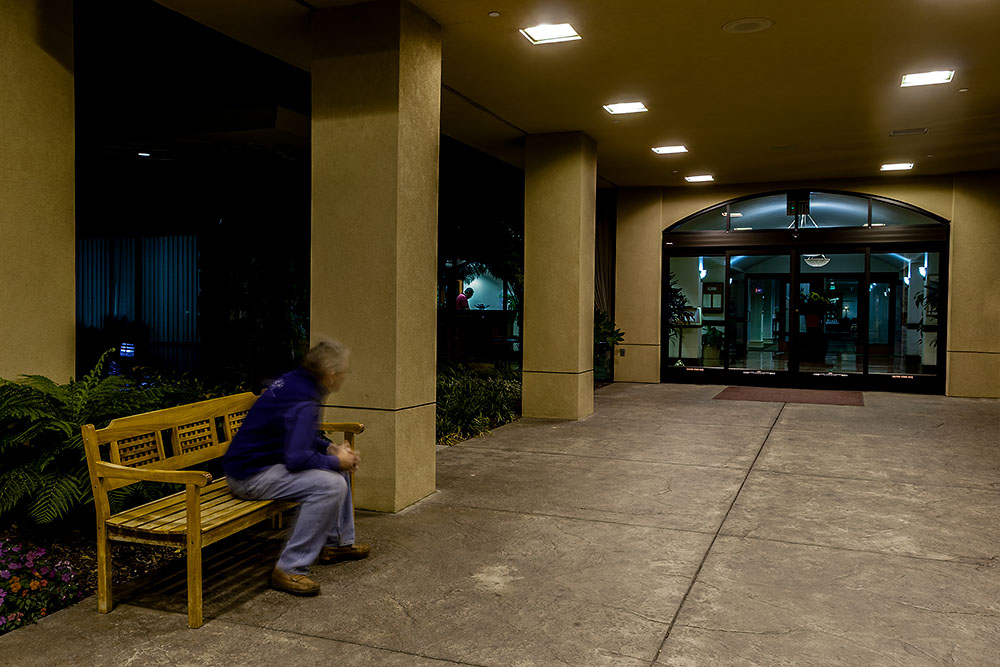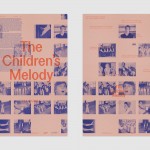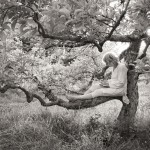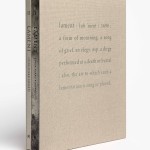Douglas Stockdale: The Flow of Light Brushes the Shadow
Douglas Stockdale’s newest book The Flow of Light Brushes the Shadow (published by Singular Images Press), is an insightful look into Stockdale’s personal response to travel in a day and age where anxiety is at an all-time high.
The Flow of Light Brushes the Shadow is a hand-bound book partly printed by Stockdale himself. Within the pages of this book can be found an ominous look into the traumatic side of travel where Stockdale aims to understand the rising tension he encounters as he travels extensively for work, by photographing himself and his surroundings.
Douglas Stockdale is a visual artist, book nerd, and science geek who uses lens-based processes to create conceptual and introspective visual narratives to investigate identity, culture, and society. He is the Senior Editor of PhotoBook Journal magazine and his art and book work is in the permeant collection of many museums and libraries. This is his sixth publication, fourth artist book, and the second to investigate aspects of anxiety.
Follow Douglas Stockdale on Instagram: @douglasstockdale
Kassandra Eller: The idea for this project seems to have been developing for several years. You were featured here on Lenscratch a while ago with the project Hotel Noir. How did this early idea turn into a photo book? When did you decide this series should be displayed as a book?
Douglas Stockdale: Let me take the last question first, as this might be the easiest to address: as a book-nerd, both a collector and book reviewer I think that I am always thinking about every project in the context of it becoming a publication of one sort or another. The tricky part for me is the most difficult aspect; envisioning how the concept can best be manifested as a book in terms of the photography, book design, layout, sequencing, and finally, the book’s production attributes. These elements all need to meld together to support the project’s concept for the intended narrative.
As you realized, The Flow of Light Brushes the Shadow is a really long-term project and the genesis was initially conceived with a working title Hotel Noir for which my book-dummy was featured in the Lenscratch article. At the time, I truly anticipated that the book-dummy would eventually be the resulting book. The early concept was investigating the aspects of frequent business travel from an insider’s perspective that usually resulted in spending time alone in a series of soulless business hotels. I was dealing with my personal issues of an intense underlying tension while traveling for business that I had not understood until only recently. Certainly, I was trying to elicit a somber mood, which in retrospect, should have been a big clue for me that something was out of sorts.
Since I always intended this project to become a book, I felt it needed to have a unifying visual concept, which did not seem to materialize with each successive version of my book-dummy. I continued to struggle over the years with an underlying tension of why travel seemed to be-devil me so much. This project just lacked the cohesive glue that would pull the various elements together.
This all changed during the COVID pandemic as a result of the increased anxiety for most everyone, and for me in particular. It was during this time that I became aware of events that occurred very early in my childhood that could create the underlying anxiety that has essentially haunted me for my entire life. Once I realized the potential effects of this mental health condition, it was like all of the pieces started to come together. My first real understanding of the effects of anxiety is a re-interpretation of my earlier artist book, Middle Ground that essentially, I realized is a project that investigates separation anxiety. That in turn crystallized for me the underlying issues I was investigating with this current artist book project, now reimaged as The Flow of Light Brushes the Shadow.
KE: The title for this project is much different than what it began as. Why have you named this photobook, The Flow of Light Brushes the Shadow?
DS: That’s an excellent question as one might not perceive that quantum leap between the earlier working title and what finally resulted. I heard an intriguing Mandarin phrase while I was on assignment in Shanghai China: Liu Guan Lue Yin, which is literally Flow-Light-Brush-Shadow. I realized that this is a poetic way to describe memory, as well as a photograph, which is very appealing as at the time as I was working on a series of artist books that investigated family issues related to dementia and the gradual loss of personal stories.
I adapted this to my English version; The Flow of Light Brushes the Shadow. When the underlying concept of my artist book finally coalesced and I began another do-over of my book dummy, I started to reconsider how this title might be appropriate than my earlier working title. It turns out that same phases Liu Guan Lue Yin can also be translated as “moving towards awareness of being impacted by anxiety”, although I felt this translation version is too literal. Thus, I deferred to the more ambiguous and poetic version of The Flow of Light Brushes the Shadow that has a potential for multiple layers of meaning, similar to the layers of anxiety that continue to haunt me.
KE: Anxiety is a very present issue in our society today. What was your reason behind this book? Was it cathartic for you to work through your own anxiety while creating this project?
DS: Anxiety is the number one mental health condition worldwide and that was before the onset of the COVID-19 pandemic, the recent Russian invasion of Ukraine, then layer on the increasing issues of climate change with the alarming increase in global warming. Regretfully, anxiety is also known as the ‘silent killer’, which is hard to detect and many can go through their entire life without knowing of its presence. My own example of how late in life I found out what is probably an underlying issue for some many things in my life is a case in point.
It is interesting that concurrently realizing what had been haunting me for my entire life is becoming a similar awareness for so many others, to the point that the medical community believes that anxiety should be consider part of someone’s annual health check-up. Nevertheless, this artist book is focused on my own personal mental health as a cathartic journey and is not meant to be representational of the issues facing society at large. That others might take away a sense of self awareness of how anxiety might be effecting them and to start to deal with its effects is a really big bonus.
It is necessary for me to confront this condition while working on this artist book as a way to understand my personal history and chaos providing an insider’s viewpoint of this mental health condition. I am not documenting how others dealing with anxiety, so I don’t view this as a photodocumentary of this condition.
Regretfully, anxiety can be so deep rooted that one never is ‘cured’, we just learn to live with it and confront the issues that arise. For me, that’s a daily grind and some days I really don’t accomplish much, and on other days I make some really good headway. I have been learning to accept that give and take and when overwhelmed, to just find some inner peace. To be honest, it has been a difficult battle at times for me to push this artist book project over the finish line.
I would like to think that this artist book could provide an increased awareness of what anxiety might look like for others. In a sense, I am providing a personal visualization of what anxiety might look like as someone who is in the trenches dealing with various aspects of this condition on a daily basis.
KE: There is a multitude of ways to show travel anxiety. I am intrigued by the images you show in the book and the way you have focused on scenes from hotels and cityscapes. How did you decide what scenes/subjects to photograph?
DS: These were all proximal to the locations that I needed to be at; the cities I traversed thru, the hotels that I needed to stay at, the random views found looking out the windows. Perhaps better thought of as a landscape of an itinerant professional. These were also at or near sites that created the most tension for me during my travels; during the day, I was meeting with other individuals that seemed calming for me, but afterwards, I was again on my own when my internal tension substantially increased.
KE: Once you decided on what to capture how did you go about photographing these scenes? Did you plan these scenes out or did you spontaneously photograph when you felt this increasing tension (anxiety)?
DS: There is a combination of both of these: a mix of staged photographs and visceral reactions to a particular place. The locations where I photographed are a direct result of my ongoing assignments where I had to travel at on a continuing basis; the question that I posed from myself was how did I relate to each particular place? Since I was re-visiting the same locations, this became an iterative process. When I returned to my studio, I could assess the results and start planning an alternative approach for the next visit that might be better suited to the vague aspects of what was bothering me. For some locations where I anticipated staging a particular photograph, there was a lot of pre-planning. In other locations, such as airport terminals where staging was more challenging, this was more of an intuitive process, which like the staged locations, I knew I would be back and could try an alternative approach on the next trip. This project involved a lot of experimentation, which was both intriguing while allowing me to become distracted from my feelings of tension and apprehension.
KE: Many of these images use an intentional motion blur to obscure the subject. Certain photos have a more intense blur than others. How did you decide when and to what degree to use motion blur?
DS: I think that utilizing blur in a photograph can be effective in creating dynamic and unsettling images which can convey an undercurrent of tension. This process abstracts the image and can challenge the reader in multiple ways; from the basics of identifying the subject, maybe unsettling if someone is more inclined to look at static photographs, that can make the subject more ambiguous, while incorporating a sense of surrealism. I have incorporated the use of blurring my subject for such a long time, that I have developed a sense of what exposure times might be more effective. For my staged photographs it is easy to return to the camera and see my results and then modify what I might want to try next. For the others, such as following someone in an airport, I have an exposure setting that is somewhat intuitive at this point and then I create a lot of images, and in post-production finding the ‘winners’ that seem to resonate with what I was attempting to capture.
KE: The placement of each image on the page is very intentional. How did you go about sequencing these images and what was the reason for placing the images on the page in the manner that you did?
DS: Thank you for noticing that detail of the book’s layout as it is very intentional and critical to my narrative. For me this is part and parcel related to the development of a book-dummy, and why finding my ‘rudder’ (underlying concept) for this artist book became so critical. Since I knew that this book was essentially about the experience of anxiety each element of the page layout had to tie to that theme. Those elements are then carried through the entire book. What could I do to increase the visual tension, that could make the reader uneasy?
Knowing that I would use a pamphlet stitch, which is a very old book binding process, to bind this book together would result artist in a lay-flat design. Thus, I could effectively span a photograph across the two-page spread without losing any photographic content in the gutter (middle). I could also use the gutter as a graphic design element to bisect a photograph in a manner that might increase the potential visual tension. Such as the first two-page spread photograph in the book with a blurred person that has the book gutter running through the middle of the individual, what I think of as a metaphor how I felt rushing through an airport terminal; fractured and potentially coming apart in a time-space continuum.
KE: I find it hard to stop photographing for a certain project. How did you know that this project was complete?
DS: This is a great question, as those who have a project orientation in their artist practice it can be difficult to know when a series is complete. Sometimes there is a hard stop and for other projects these just seems to slow down and eventually whiter away. Something else captures your imagination and you want to work on that instead.
For this project finding a stopping point was relatively easy; when I finished my last extensive travel assignment, I refocused on taking only local assignments that did not require travel, or if travel might be needed, it would a short one overnight trip, not a prolonged multi-week meandering journey. This decision to change my business practice was not predicated on avoiding anxiety, as at that time, I did not understand the underlying reason for why I was having major issues with travel, I just knew that I needed to stop traveling extensively. Thus, the opportunity to document my uneasy travel experiences also ended abruptly.
That said, I continue to work on other projects that deal directly or indirectly with aspects of anxiety, just not in the context of travel.
KE: As you were photographing this project were there any books/projects/artists that you drew inspiration from?
DS: Absolutely, as a book reviewer for PhotoBook Journal I have a constant stream of new ideas from other artists, photographers, book designers, and publishers that I find inspiring. The first book artist that raise my consciousness about an alternative publishing pathway is Julia Borissova, who is located in St. Petersburg, Russia when I obtained in 2014 her self-published artist book Running to the Edge. Since then, I have added eight other of her amazing artist books to my collection. A really creative book designer in the Netherlands is Sybren Kuiper (-SYB-) and I look forward to every photographic book project that he collaborates on, most recently with Ellen Korth, Chrsitine Riedell, Kate Nolan and Claire Felicie. Another rising book star is Datz Press in South Korea who has been working with a series of photographic artist producing amazing short run and artist books with the likes of Sal Taylor Kydd, Ewa Monica Zebrowski and Pamela Landau Connolly. These book designers and artist just seem to keep pushing the creative publishing boundaries, which is inspiring for my own book work.
KE: Now that this photobook is published what is next?
DS: As you might imagine, I have a couple of other early stage book projects in development and probably at the top of my list is an investigation of the city in Southern California where I live, which is a decommissioned WWII/Korean War practice bombing range. The story of this ex-military site is a combination of an Aftermath project, the lingering impact of 70-year-old foreign wars, potential environmental contamination, and due to the buried ordnance, the potential of a lingering anxiety about unknown dangers. I have been using very expired 120 color film as a metaphor for the expired buried ordnance that still remains to photograph this upscale urban landscape.
The alternative publishing process using one of the oldest book binding methods for this artist book has inspired me to start experimenting with alternative photographic processes. I have starting with the perhaps the easiest of these, the Cyanotypes, and anticipate I will start working with the more complicated processes, such as gum bichromate over Platinum prints. Since I had a 15-year holiday from photography to paint, I have most of the alternative materials already in hand.
KE: Thank you very much Douglas for taking the time to talk with me. Before we end, is there that you would like to discuss that I haven’t mentioned?
DS: Thank you, this was a wonderful conversation. I will have to admit, as a book and portfolio reviewer, I find talking about the work of others fairly easy to accomplish, and perhaps due to the complexities of anxiety, it can be difficult for me to discuss my own work. So thank you for walking us through this.
While there is one final point related to this project that I would like to make; this is an artist book that evolved from my own self-awareness as to what was really bothering me. Likewise, I encourage others who are having personal and emotional issues to seek help in finding out what might be going on. I can state from my own experience that while you may find out that there is not a ‘cure’ that there are ways to help you cope. Some days will be better than others, nevertheless you may have a clearer perspective of what might be impacting you, thus allowing you to become more proactive in how you react. I have found that it is better to manage anxiety, than have anxiety manage me.
Posts on Lenscratch may not be reproduced without the permission of the Lenscratch staff and the photographer.
Recommended
-
Jamel Shabazz: Prospect Park: Photographs of a Brooklyn Oasis, 1980 to 2025December 26th, 2025
-
Andrew Lichtenstein: This Short Life: Photojournalism as Resistance and ConcernDecember 21st, 2025
-
Andrew Waits : The Middle DistanceDecember 20th, 2025
-
Aaron Rothman: The SierraDecember 18th, 2025
-
Eli Durst: The Children’s MelodyDecember 15th, 2025




































































